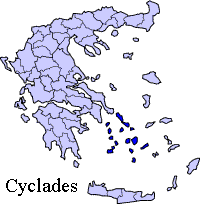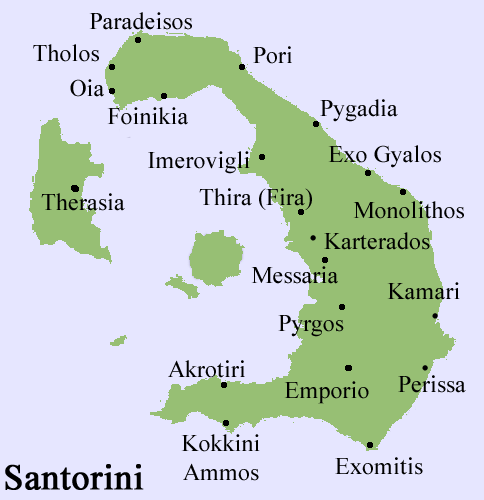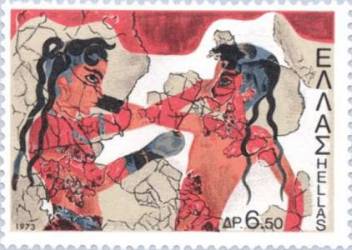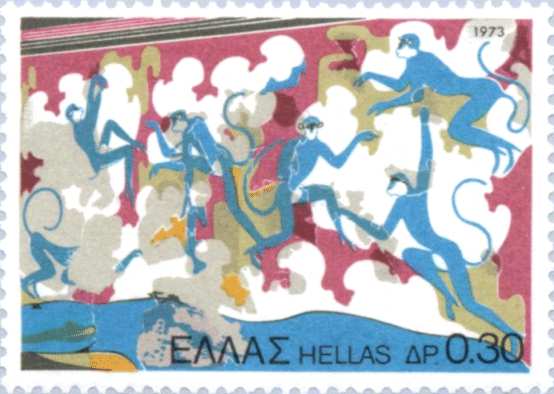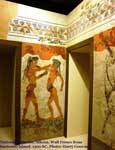
Akrotiri, Photo Klearchos P. Kapoutsis
Akrotiri () is a village of Santorini. , population 450 in 2001 in the SW part of the island c. 12 km from Fira.
Excavations starting in 1967 at the site called Akrotiri under the late Prof. Spyridon Marinatos have made Thera the best-known "Minoan" site outside of Crete, the homeland of the culture. The island was not called Thera at the time. Only the southern tip of a large town has been uncovered, yet it has revealed complexes of buildings, streets and squares, with remains of walls standing as high as 8 meters, all entombed in the solidified ash of the famous eruption of Thera. The site was not a palace-complex such as are found in Crete, but its excellent masonry and fine wall-paintings show that this was no conglomeration of merchants' warehousing either. A loom-workshop suggests organized textile weaving for export.
The oldest signs of human settlement are Late Neolithic (4th millennium BC or earlier), but ca 2000-–1650 BC Akrotiri developed into one of the Aegean's major Bronze Age ports, with recovered objects that had come not just from Crete but also from Anatolia, Cyprus, Syria and Egypt, from the Dodecanese and the Greek mainland.
Pipes with running water and water closets found on Thera are the oldest such utilities discovered. The pipes run in twin systems, indicating that the Therans used both hot and cold water supplies. The hot water's origin was probably geothermic, given the volcano's proximity.
Fragmentary wall-paintings at Akrotiri depict "Saffron-Gatherers" who offer their crocus-stamens to a seated lady, perhaps a goddess; in another house two antelopes, painted with the kind of confident, flowing decorative, calligraphic line one might expect in a Persian manuscript; the famous fresco of a fisherman with his double strings of fish strung by their gills; the flotilla of pleasure boats, accompanied by leaping dolphins, where ladies take their ease in the shade of light canopies. The Minoan frescos lack the insistent mythological content familiar in both Greek and Christian decor.


Shelter of the ancient settlement

Akrotiri, Table, see also Ancient Greek Furniture
Click image to enlarge
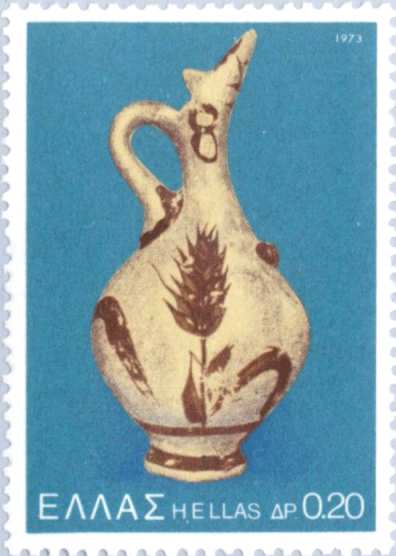

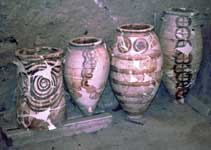

The "saffron-gatherers, saffron crocus flowers, represented as small red tufts, are gathered by two women in a fragmentary Minoan fresco from Akrotiri , (See History of Saffron) 16th c. BC

|
The eastern building, “fresco of the blue Monkeys” climbing on rocks at the side of a river. |
The Lighthouse in Akrotiri was build 1892 during the Ottoman Period by the French company La Société Collas et Michel. Its range was 23 nautical miles. It is 18 km from Fira at an altitude of around 100 m.
It was restored in 1925. The operation stopped during the World War II. It used Petroleum for the operation, since 1983 electricity and since 1988 it is automatic controlled. ts range now is 24 nautical miles
Coordinates 36ο 21' 05" N 25ο 21' 05" E
Beach : Mesa Pigadia
Santorini Google Earth
All text is available under the terms of the GNU Free Documentation License
|
Ancient Greece |
Medieval Greece / Byzantine Empire |
Modern Greece |
|---|---|---|
|
Science, Technology , Medicine , Warfare |
Science, Technology, Arts |
Cities, Islands, Regions, Fauna/Flora , |

